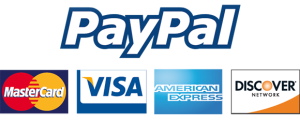Hindustan Unilever and the Prenatal Care Market “Giving birth should be your greatest achievement not your greatest fear.”
1 —Jane Fraser Aarti, a graduate from a
leading business school in India, was in the first trimester of her first pregnancy. She was abreast of the latest developments in the prenatal care market through
health-related articles and blogs. She noticed that the number of Indian women drawn toward maternity care products had swelled in 2014. She wanted to buy skin care
products during her pregnancy, but she found scant and scattered product lines with poorly defined brand strength in the market. She wondered if Hindustan Unilever were
to enter the prenatal care segment with its brand Dove if it would succeed because no other brand had a strong identity as a “woman’s brand.” As more and more women
began working, had higher disposable incomes, and became health conscious with the desire to stay fit and beautiful during and after pregnancy, the number of Indian
women looking for maternity products had increased. Expectant mothers bought over-the-counter (OTC) products for pregnancy-related hair and skin problems. With a
fertility rate of 2.47 births per woman worldwide and 2.51 births per woman in India,2 along with evolving customer preferences, the maternity care market in India
appeared as a lucrative venture. There was no dearth of pharmaceutical products for pregnancy care. Several private labels in the cosmetic category were available, but
no cosmetic company had yet established a unique prenatal brand that offered focused products to address each of the personal care needs of expectant mothers. Dove, a
master brand from Unilever, had developed a worldwide reputation as a nourishing and caring brand for women. Dove’s success was driven by brand extensions and product
innovations. Aarti wondered if Hindustan Unilever were to enter the maternity care cosmetic segment as part of its brand expansion plan for Dove, would it benefit from
a first-mover advantage by catering to the growing demand for maternity care cosmetic products among Indian women? Hindustan Unilever With close to 16,000 employees,
1,500 managers, and a total coverage area of over 6.4 million outlets, Hindustan Unilever Limited (HUL) was a behemoth in the fast-moving consumer goods industry
(FMCG) in India.3 Its history traced to the summer of 1888, when the first crates of Sunlight soap bars, stamped with “Made in England by Lever Brothers,” entered India
through a harbor in Kolkata.4 HUL’s market capitalization stood at INRi,5 1305.51 billion in 2013–2014. It reported annual revenues of INR 280.19
2/10/2017 Print canvas
2/13
billion and profits of INR 38.67 billion for the financial year 2013–2014, at a year-on-year growth rate of 8.55% and 1.86% respectively (see Exhibit 1 for selected
financials of HUL).6 Unilever set up its first Indian subsidiary, called Hindustan Vanaspati Manufacturing Company, in 1931. This was followed by Lever Brothers India
Limited in 1933 and United Traders Limited in 1935. In 1956, the three companies merged, forming Hindustan Lever Limited. By then, products such as Lifebuoy soap
(launched in 1895), Brooke Bond Red Label tea (launched in 1903), Lux flakes (launched in 1905), and Vim scouring powder (launched in 1913) had already been introduced
to the Indian market. By the turn of the century, brands such as Lakmé, Kwality, Milkfood, Ponds India Limited, and Brooke Bond Label were either acquired or had
merged with Hindustan Lever Limited, establishing the company as a well-recognized brand throughout India.7 The company was renamed to Hindustan Unilever Limited (HUL)
in 2007.8 By fiscal year 2012–2013, HUL was a market leader in categories such as laundry, soaps, hair care, home care, and skin care, while holding second-place
positions in categories such as tea, oral care, and deodorants.9 Eighteen of HUL’s brands were featured on the Nielsen Corporation’s list of top 100 most trusted
brands in 2012.10 These included the likes of Clinic Plus (ranked 4th), Lifebuoy (ranked 10th), Rin (ranked 12th), Surf Excel (ranked 13th), Dove (ranked 37th), and
Lakmé (ranked 81st).11 Exhibit 1 Financials of Hindustan Unilever (in INR billion)
Source: Hindustan Unilever Limited. Annual Report 2013–14: Making Sustainable Living Commonplace. Mumbai: Hindustan Unilever Limited, 2014. Web. 25 Jul.2014.
. The Master Brand Dove Dove, one of Unilever’s 12 core brands, had retail sales of close to USD $6

